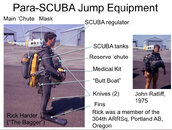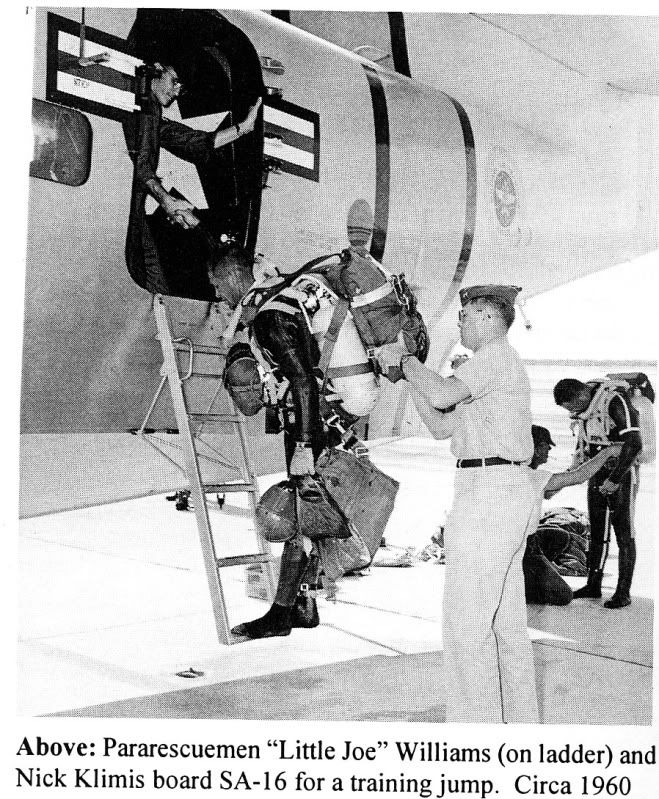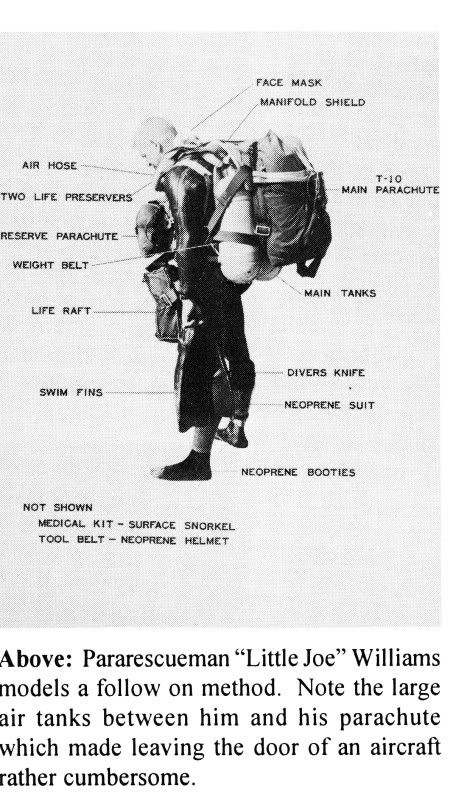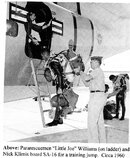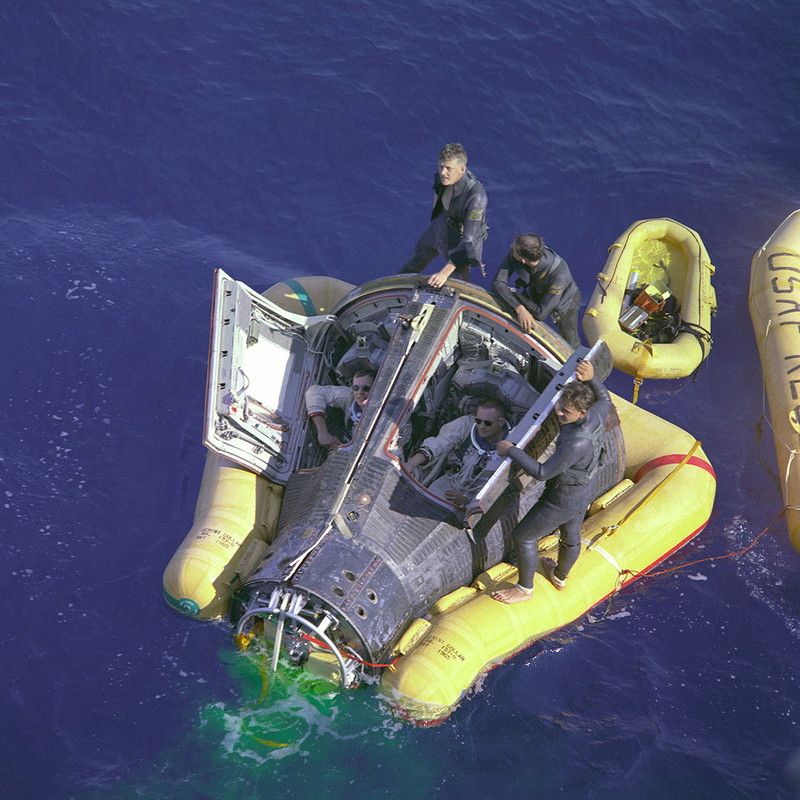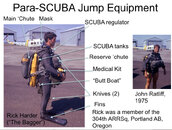I was posting in another solo diving thread about divemasters who say, "if you dive alone, you die alone," and talked about my solo diving over the years. I also said that if some divemaster challenged me about solo diving, I would ask if he (almost always a "he") had ever made a parascuba jump out of a HC-130 onto an Apollo capsule. If he had not, he had nothing to contribute to my perceptions of solo diving, as parascuba is the ultimate in solo diving (and yes, we did dive after the jump many times). We were taught to be self-sufficient, and if we could not do that, we could not make a parascuba jump. So on this thread, I will show some of the photos of parascuba jumping, such as this black and white photo I took of a parascuba currency jump we conducted in 1968. I was a member of the 33rd Aerospace Rescue and Recovery Squadron (ARRSq), U.S. Air Force, and this jump was out of a HU-16B Albatross flying boat aircraft.

We did have a support boat in the water when we made these training jumps, but not on missions. What were the missions? They varied tremendously, and I'll give some references later. But I will show below one of the most famous of these missions, Gemini VIII.
Here is a photo of the HU-16B Albatross, which was our bird in 1968 when I was stationed in Okinawa.


Dave Scott (left) and Neil Armstrong breathe the fresh air of Earth as the hatches of Gemini VIII are opened by a trio of U.S. Air Force Pararescuemen (PJs) ...A/2C Glenn M. Moore; A/1C Eldridge M. Neal; and S/Sgt Larry D. Huyett. The HU-16B Albatross circled above them after the jumps, until pulled away and replaced by a HC-130 from Japan. The HU-16B was prohibited from making a water landing and picking up the astronauts, and instead the five awaited hours for the U.S. Navy ship to find them.

Here the three PJs (the USAF aircrew designation for pararescuemen) pose with Neil Armstrong and Dave Scott on the U.S. Navy ship that picked them up.
All through my USAF career, except when in combat rescue in Southeast Asia, we trained for parascuba jumps, both out of aircraft and out of helicopters. We also deployed directly into the water from helicopters. I will get into the helicopter deployments later. Below you will see a photo of Rick Harder in full parascuba gear, with an explanation as to what he is wearing and the HH-1H Huey helicopter in the background, which was the 304th ARRSq's bird during the latter period of my career.
SeaRat
PS: Photos above, other than those of the astronauts, were by John C. Ratliff, taken while on active duty in the USAF, and therefore are not copyrighted. Please do attribute them though if they are used. The astronaut photos are from NASA, and I do not believe they are copyrighted either.
We did have a support boat in the water when we made these training jumps, but not on missions. What were the missions? They varied tremendously, and I'll give some references later. But I will show below one of the most famous of these missions, Gemini VIII.
Here is a photo of the HU-16B Albatross, which was our bird in 1968 when I was stationed in Okinawa.
Dave Scott (left) and Neil Armstrong breathe the fresh air of Earth as the hatches of Gemini VIII are opened by a trio of U.S. Air Force Pararescuemen (PJs) ...A/2C Glenn M. Moore; A/1C Eldridge M. Neal; and S/Sgt Larry D. Huyett. The HU-16B Albatross circled above them after the jumps, until pulled away and replaced by a HC-130 from Japan. The HU-16B was prohibited from making a water landing and picking up the astronauts, and instead the five awaited hours for the U.S. Navy ship to find them.
Here the three PJs (the USAF aircrew designation for pararescuemen) pose with Neil Armstrong and Dave Scott on the U.S. Navy ship that picked them up.
All through my USAF career, except when in combat rescue in Southeast Asia, we trained for parascuba jumps, both out of aircraft and out of helicopters. We also deployed directly into the water from helicopters. I will get into the helicopter deployments later. Below you will see a photo of Rick Harder in full parascuba gear, with an explanation as to what he is wearing and the HH-1H Huey helicopter in the background, which was the 304th ARRSq's bird during the latter period of my career.
SeaRat
PS: Photos above, other than those of the astronauts, were by John C. Ratliff, taken while on active duty in the USAF, and therefore are not copyrighted. Please do attribute them though if they are used. The astronaut photos are from NASA, and I do not believe they are copyrighted either.
Attachments
Last edited:



